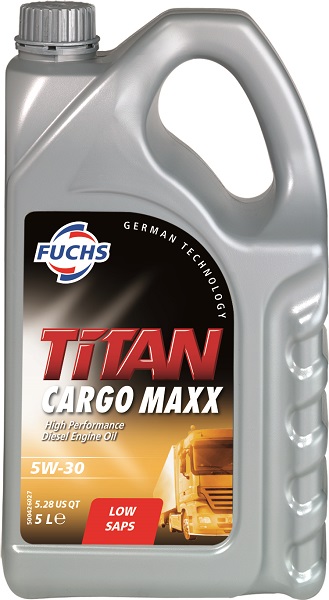Fuchs: the drive for thinner engine oils
 Fuchs Lubricants has issued guidance for transport operators on the topic of engine oil viscosity, and the changes taking place in lubricant development.
Fuchs Lubricants has issued guidance for transport operators on the topic of engine oil viscosity, and the changes taking place in lubricant development.
“Transport operators will have noticed that engine oils have changed significantly over the last decade,” said Andy Brown, UK automotive technical manager at Fuchs Lubricants.
“Whereas the standard product was once a semi-synthetic 10W-40, 5W-30 and even 0W-20 viscosities are now commonplace in the CV market.
“What this means, in practice, is that oils are becoming increasingly thinner – and that is being driven by emission targets.”
In a nutshell, says Andy, the thinner the oil, the lower the friction.
“This reduction in resistance helps the engine become more efficient and you use less fuel. Some of the engine oils at engine operating temperatures can be only twice as thick as water at room temperature.”
He continued: “Oil really does have a big part to play in engine efficiency. Some of our products have been proven to reduce fuel consumption by more than three per cent and some of the future products will reduce this by even more.
“The challenge for us as oil blenders is to make our products as thin as possible to help the OEMs meet their emissions targets, without it being too thin so that it damages the engine.
“The labels an oil are given (for example, 10W-40 or 0W-16) might seem complicated, but it’s actually quite straightforward.
“The first part of the name, the number followed by the ‘W’, refers to low temperature properties of the oil. The ‘W’ just stands for ‘winter’. The oil has to perform in a cold-cranking simulator at various sub-zero temperatures to achieve its classification. For 0W it’s -35°C, for 5W it’s -30°C, for 10W it’s -25°C, and so on. Therefore, if you’re using a 0W and the temperature is -35°C when you start the engine, the oil should flow without problem.”
The second part of the oil’s name, conversely, refers to the oil’s high temperature behaviour, Andy explains.
“This is the oil’s kinematic viscosity at 100°C, meaning how well the oil flows at that temperature. The performance is measured and the oil is classified depending on the result.
“Finally, there is a High Temperature High Shear (HTHS) viscosity test, which is run using oil heated to 150°C and under shear, which simulates the oil in a bearing in an engine. It replicates what pressures the oil will be under in main bearings or big end bearings. This test is a crucial part of fuel economy.
“Testing in this way is timely and expensive but it gives the OEMs the confidence that our products stand up to scrutiny and will help them achieve
their required fuel economy and meet their emission limits.”
Andy continued: We are led entirely by the OEMs and their wants and needs. They will quote specific values or limits for their engine, and it’s down to us, the oil manufacturers, to produce a product to match.
“We have developed a range of oils at various viscosities, but the reason we now have so many different products – many more than we have had historically – is that a lot of manufacturers are developing their own very precise specifications for their engine oils.
“In each model of vehicle, the piston rings and the upper cylinder area are of great interest as frictional losses in these areas are high and each OEM engine design demands different additives in the oil to help lubricate these crucial parts.
“Though we have several products at the same viscosity, 5W-30 for example, the additives in them are different, designed to deal with specific needs of the OEM’s components.”
He concluded: “The prime piece of advice we always give transport operators is to make sure the oil you are using is correct. If in doubt, consult the manufacturer’s handbook, or contact the Fuchs team for expert advice.”











